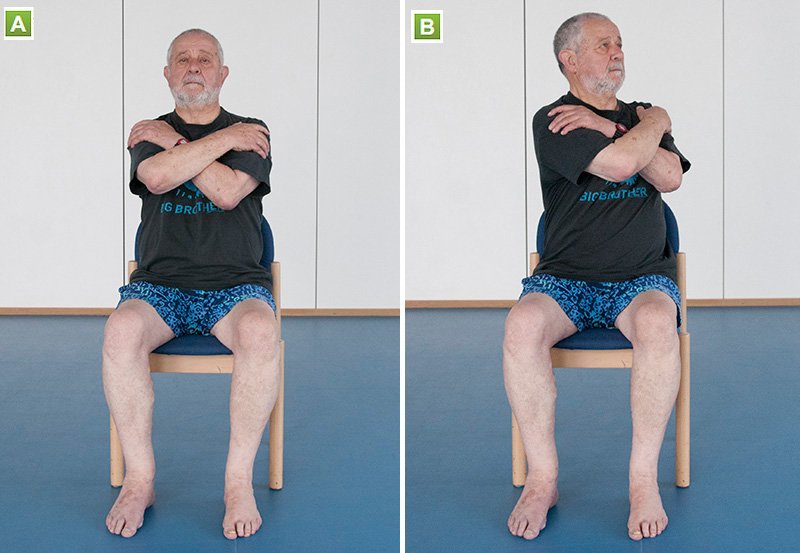For the next few weeks we’ve been told to stay at home as much as possible to combat the spread of coronavirus, but it’s important to keep exercising, especially if you have limited mobility.
For that reason, over the coming days we’ll be re-running a series of blogs on gentle exercises you can do at home to maintain or improve balance, strength, flexibility and general fitness. The exercises are from the NHS UK website and almost everyone should be able to manage some or all of them.
Whatever your age or level of mobility, it’s widely accepted that ‘exercise is good for you’. Keeping joints moving, using muscles, getting the blood pumping and the lungs working are all beneficial to both physical and mental health, while being sedentary for long periods can give rise to various medical problems.
In today’s blog we’ll look specifically at ‘sitting exercises’ for people with limited mobility. These are gentle but effective exercises which can be done at home while sitting on a chair. Over time they will help improve your general fitness level and your mobility and balance, helping prevent falls.
We’ll look at the first three today and four more tomorrow. First, you’ll need a solid stable chair that doesn’t have wheels and ideally doesn’t have arms, as they will restrict your movement. You should be able to sit on the chair with your feet flat on the floor and your legs bent at the knee to form right angles.
Wear loose, comfortable clothing and keep some water handy. Aim to do these exercises at least twice a week, but go at your own pace and listen to your body; if you get out of breath or something hurts, stop for a while. Build up the exercises slowly and aim to increase the number of times you do each one (called ‘repetitions’) over time. A little and often is far better than overdoing it.
 Chest Stretch: This exercise is good for improving your posture, which could help relieve back pain. Sit upright so that your back is not touching the back of the chair. Now pull your shoulders back and down and extend your arms out to the side (fig. A). Gently push your chest forward and up until you feel a stretch across your chest (fig. B). Hold this position for five to 10 seconds then gently release Repeat the exercise five times.
Chest Stretch: This exercise is good for improving your posture, which could help relieve back pain. Sit upright so that your back is not touching the back of the chair. Now pull your shoulders back and down and extend your arms out to the side (fig. A). Gently push your chest forward and up until you feel a stretch across your chest (fig. B). Hold this position for five to 10 seconds then gently release Repeat the exercise five times.
 Upper body twist: This stretch will gradually develop and maintain flexibility in the upper back. Sit upright with your feet flat on the floor and cross your arms across your chest so that each hand reaches for the opposite shoulder (fig. A). Now, without moving your hips, turn your upper body to the left as far as is comfortable and hold the position for five seconds (fig. B). Repeat the exercise turning to the right and try to do five times for each side.
Upper body twist: This stretch will gradually develop and maintain flexibility in the upper back. Sit upright with your feet flat on the floor and cross your arms across your chest so that each hand reaches for the opposite shoulder (fig. A). Now, without moving your hips, turn your upper body to the left as far as is comfortable and hold the position for five seconds (fig. B). Repeat the exercise turning to the right and try to do five times for each side.
 Hip marching: This exercise is designed to strengthen hips and thighs and improve flexibility. Sit upright and grip the seat rails of the chair, but avoid leaning back on the chair for support (fig. A). Now lift your left leg with your knee bent as far as is comfortable. Do it slowly and deliberately, placing your foot back down with control. Repeat the exercise with the opposite leg and perform five lifts for each leg, so the overall effect is a sitting down slow-motion march.
Hip marching: This exercise is designed to strengthen hips and thighs and improve flexibility. Sit upright and grip the seat rails of the chair, but avoid leaning back on the chair for support (fig. A). Now lift your left leg with your knee bent as far as is comfortable. Do it slowly and deliberately, placing your foot back down with control. Repeat the exercise with the opposite leg and perform five lifts for each leg, so the overall effect is a sitting down slow-motion march.
We’ll feature four more of these ‘sitting exercises’ in tomorrow’s blog, but there’s no reason why you shouldn’t make a start on the first three. If any of them cause you a problem, either avoid that exercise or try to modify it to something that suits you.
Remember, don’t overdo it, but even a little exercise is better than none and you’ll be surprised at how quickly you can build up your repetitions and start to feel the benefits. If you can, you should start exercising with someone there to help and encourage you, but it must be someone already living in your household in line with the current isolation measures. You may feel tired at first, but try to plan regular exercise into your daily or weekly routine – it will soon start to feel easier and become more enjoyable.
